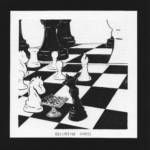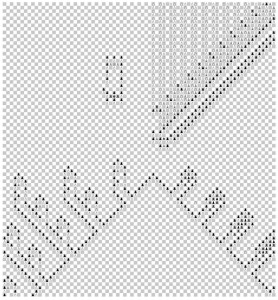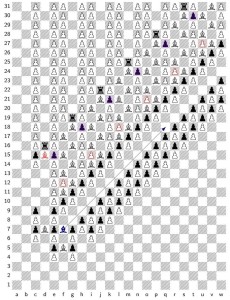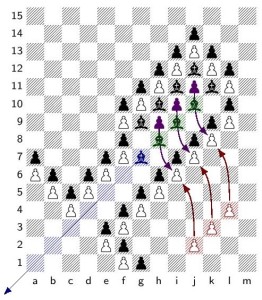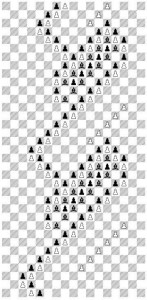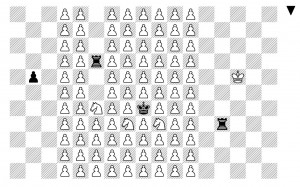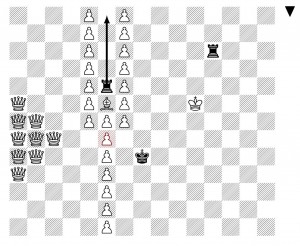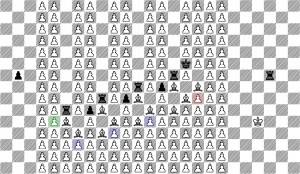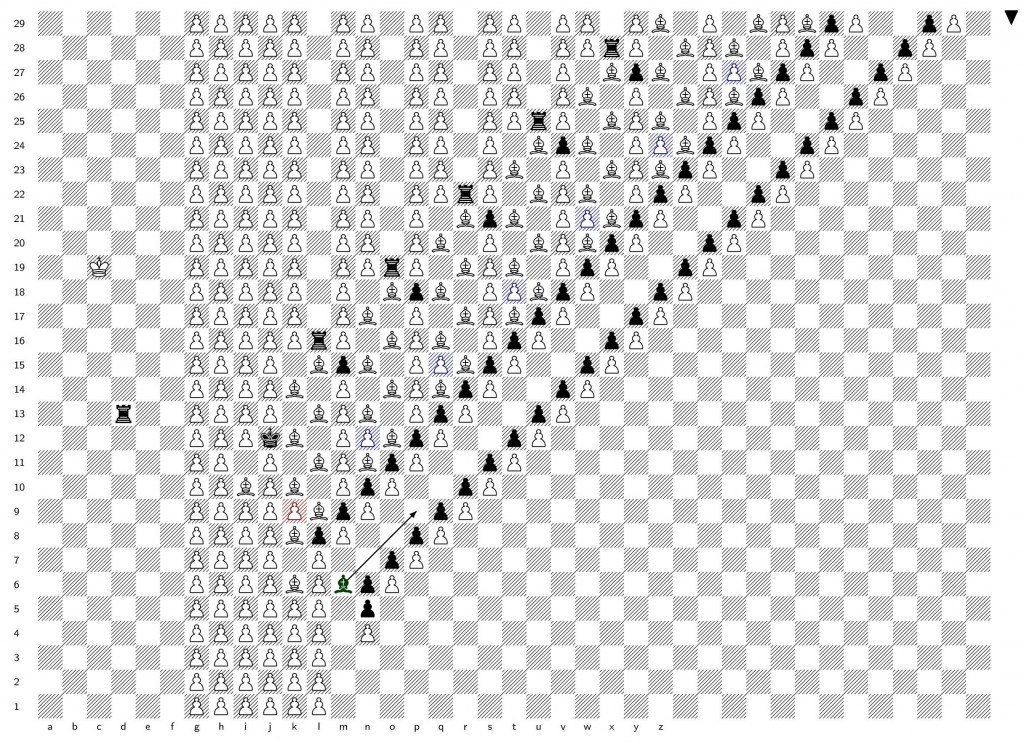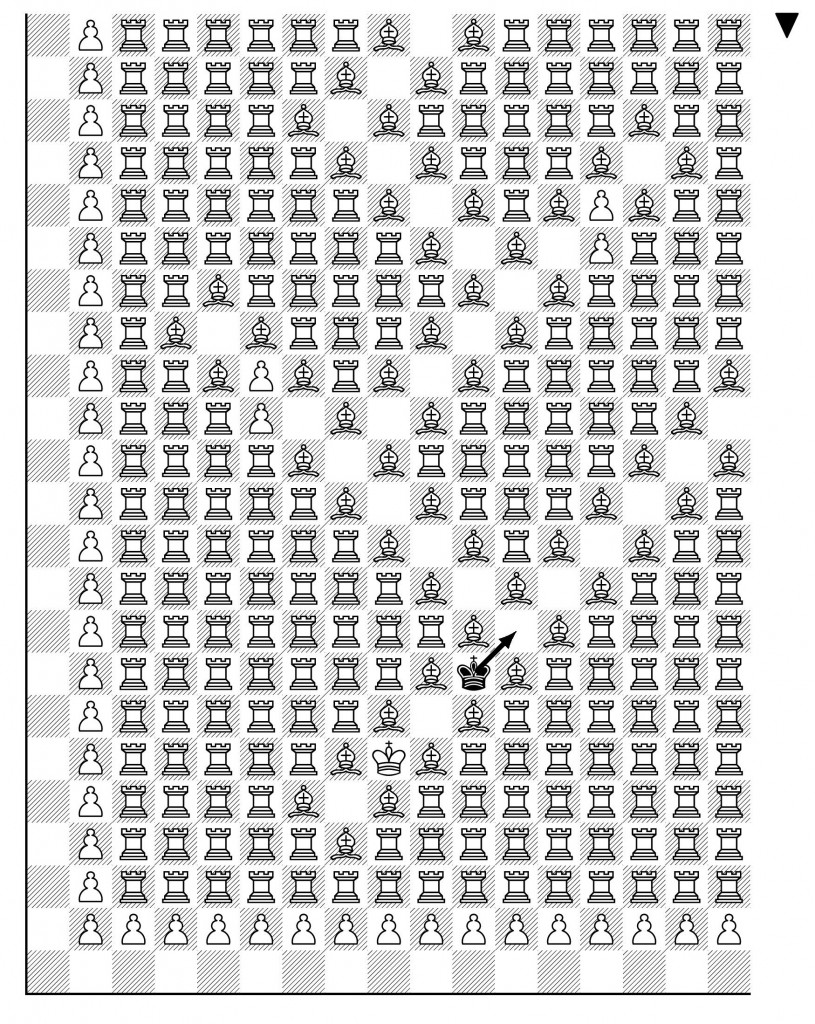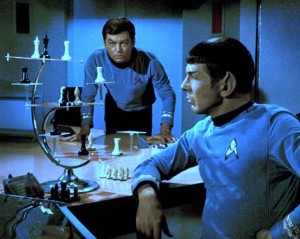In my imagination, and perhaps also in historical reality, our current standard rules of chess evolved from a simpler era with a simpler set of rules for the game. Let us call it simplified chess. In simplified chess there was the same 8×8 board with the same pieces as now moving under the same movement rules. But the winning aim was different, and simpler. Namely, the winning goal of simplified chess was simply to capture the enemy king. You won the game by capturing the opposing king, just as you would capture any other piece.
There was therefore no need to mention check or checkmate in the rules. Rather, these words described important situations that might arise during game play. Specifically, you have placed your opponent in check, if you were in a position to capture their king on the next move, unless they did something to prevent it. You placed your opponent in checkmate, if there was indeed nothing that they could do to prevent it.
In particular, in simplified chess there was no rule against leaving your king in check or even moving your king into check. Rather, this was simply an inadvisable move, because your opponent could take it and thereby win. Checkmate was merely the situation that occurred when all your moves were like this.
It is interesting to notice that it is common practice in blitz chess and bullet chess to play with something closer to simplified chess rules—it is often considered winning simply to capture the opposing king, even if there was no checkmate. This is also how the chess variant bughouse is usually played, even in official tournaments. To my way of thinking, there is a certain attractive simplicity to the rules of simplified chess. The modern chess rules might seem to be ridiculous for needlessly codifying into the rules a matter that could simply be played out on the board by actually capturing the king.
Part of what I imagine is that our contemporary rules could easily have evolved from simplified chess from a practice of polite game play. In order to avoid the humiliation of actually capturing and removing the opponent’s king and replacing it with one’s own piece, which indeed might even have been a lowly pawn, a custom developed to declare the game over when this was a foregone conclusion. In other words, I find it very reasonable to suppose that the winning checkmate rule simply arose from a simplified rule set by common practice of respectful game play.
I am not a chess historian, and I don’t really know if chess did indeed evolve from a simpler version of the game like this, but it strikes me as very likely that something like this must have happened. I await comment from the chess historians. Let me add though that I would also find it reasonable to expect that simplified chess might also have had no provision for opening pawns moving two squares instead of just one. Such a rule could arise naturally as an agreed upon compromise to quicken the game and get to the more interesting positions more quickly. But once that rule was adopted, then the en passant rule is a natural corrective to prevent abuse. I speculate that castling may have arisen similarly—perhaps many players in a community customarily took several moves, perhaps in a standard manuver sequence, to accomplish the effect of hiding their kings away toward the corner and also bringing their rooks to the center files; the practice could have simply been codified into a one-move practice.
My main point in this post, however, does not concern these other rules, but rather only the checkmate winning condition rule and to a certain logic-of-chess issue it brings to light.
When teaching chess to beginners, it is common to describe the checkmate winning situation in terms of the necessary possibility of capturing the king. One might say that a checkmate situation means the king is attacked, and there is nothing the opponent can do to prevent the king from being captured.
This explanation suggests a general claim in the logic of chess: a position is in checkmate (in the contemporary rules) if and only if the winning player can necessarily capture the opposing king on the next move (in simplified chess).
This claim is mostly true. In most instances, when you have placed your opponent in checkmate, then you would be able to capture their king on your next move in simplified chess, since all their moves would leave the king in check, and so you could take it straight away.
But I would like to point out something I found interesting about this checkmate logic claim. Namely, it isn’t true in all cases. There is a position, I claim, that is checkmate in the modern rules, but in simplified chess, the winning player would not be able to capture the enemy king on the next move.
My example proceeds from the following (rather silly) position, with black to move. (White pawns move upward.)
Of course, Black should play the winning move: knight to C7, as shown here:
This places the white king in check, and there is nothing to be done about it, and so it is checkmate. Black has won, according to the usual chess rules of today.
But let us consider the position under the rules of simplified chess. Will Black be able to capture the white king? Well, after Black’s nC7, it is now White’s turn. Remember that in simplified chess, it is allowed (though inadvisable) to leave one’s king in check at the end of turn or even to move the king into check. But the trouble with this position is not that White can somehow move to avoid check, but rather simply that White has no moves at all. There are no White moves, not even moves that leave White in check. But therefore, in simplified chess, this position is a stalemate, rather than a Black win. In particular, Black will not actually be able to capture the White king, since White has no moves, and so the game will not proceed to that juncture.
Conclusion: checkmate in contemporary chess is not always the same thing as being necessarily able to capture the opposing king on the next move in simplified chess.
Of course, perhaps in simplified chess, one wouldn’t regard stalemate as a draw, but as a win for the player who placed the opponent in stalemate. That would be fine by me (and it would align with the rules currently used in draughts, where one loses when there is no move available), but it doesn’t negate my point. The position above would still be a Black win under that rule, sure, but still Black wouldn’t be able to capture the White king. That is, my claim would stand that checkmate (in modern rules) is not the same thing as the necessary possibility to capture the opposing king.
I had made a Tweet earlier today about this idea (below), but opted for a fuller explanation in this blog post to explain the idea more carefully.
The simultaneous checkmate/stalemate paradox.
— Joel David Hamkins (@JDHamkins) July 1, 2022
The checkmate rule in chess is commonly described as a proxy for the necessary capture of the king—you win by placing your opponent in a position in which you can definitely take the king on your next move. Logically equivalent.
On Twitter, user Gro-Tsen pointed out a similar situation arises with stalemates. Namely, consider the following position, with White to play:
Perhaps Black had just played qB5, which perhaps was a blunder, since now the White king sits in stalemate, with no move. So in the usual chess rules, this is a drawn position.
But in simplified chess, according to the rules I have described, the White king is not yet explicitly captured, and so he is free still to move around, to A6, A8, B6, or B7 (moving into check), or also capturing the black rook at B8. But in any case, whichever move White makes, Black will be able to capture the White king on the next move. So in the simplified chess rules, this position is White-to-win-in-1, and not a draw.
Furthermore, this position therefore shows once again that checkmate (in normal rules) is not the same as the necessary possibility to capture the king (in simplified rules), since this is a position where Black has a necessary possibility to capture the White king on the next move in simplified chess, but it is not checkmate in ordinary chess, being rather stalemate.
;TLDR Ultimately, my view is that our current rules of chess likely evolved from simplified rules and the idea that checkmate is what occurs when you have a necessary possibility of capturing the enemy king on the next move in those rules. But nevertheless, example chess positions show that these two notions are not quite exactly the same.





